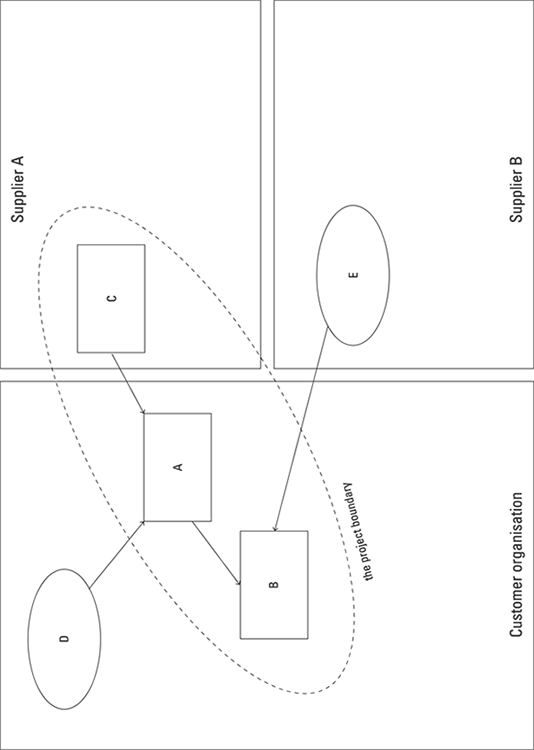Knowing What’s In and What’s Out
Most products in the project will be built by the teams. Some, however, may come from outside the project. Unless you work in a company that makes computers, if you’re running an IT project then the computer itself will be an external product – something coming over the project boundary from outside. Now, be careful not to fall into the trap of thinking that external products are unimportant. I used to work in IT projects, and you can take it from me that in an IT project the computer is rather important. The point is that the computer, vital though it is to the project, came in over the project boundary from somewhere outside; it wasn’t created by the team.
A common confusion when first learning about internal and external products is to mistake the project boundary for the organisational boundary. An external product is a product coming from outside the project, not necessarily from outside the customer organisation. For example, it may be coming from another project. Perhaps another project is developing a specification for a piece of equipment it’s constructing, and your project needs a copy of the specification because a product being built in your project will have to interface with that other project’s equipment.
It may help you to clarify which products are internal products and which are external if you look at a diagram. Figure 22-1 shows how a product from an outside supplier can be an internal product, while the product from somewhere else in your own organisation can be an external product. Remember, this is all about the project boundary.
Figure 22-1 shows an extract from a Product Flow Diagram for a project involving two suppliers from outside the customer organisation. Supplier A is providing a team in the project, and the work of that team is included in the Project Plans. Supplier B is just sending in a product and is not involved in the work of the project. The diagram uses the normal notation of a rectangle for internal or team products, and an ellipse for external products. The reasoning behind the symbols on the diagram is:
![]() Products A and B: These are being produced by project teams that are from within the customer organisation.
Products A and B: These are being produced by project teams that are from within the customer organisation.
![]() Product C: This product is being produced by a team from Supplier A. The team is from outside the customer organisation, but it’s inside the project because the team is a project team.
Product C: This product is being produced by a team from Supplier A. The team is from outside the customer organisation, but it’s inside the project because the team is a project team.
![]() Product D: This product is external. Yes, the product is coming from within the same customer organisation, but it’s coming from outside the project – perhaps it’s coming from another project.
Product D: This product is external. Yes, the product is coming from within the same customer organisation, but it’s coming from outside the project – perhaps it’s coming from another project.
![]() Product E: This product is also external. It’s external not because the product is coming from outside the customer organisation, which actually it is, but because the product is coming from outside the project.
Product E: This product is also external. It’s external not because the product is coming from outside the customer organisation, which actually it is, but because the product is coming from outside the project.
Another source of external products is where things already exist when the project starts. If a product already exists, then one of your teams on the project isn’t going to be asked to build it so, by definition, that product is external. In the manual, and especially in the exams, products already in existence are called pre-requisites.

Figure 22-1: Products and the project boundary.
